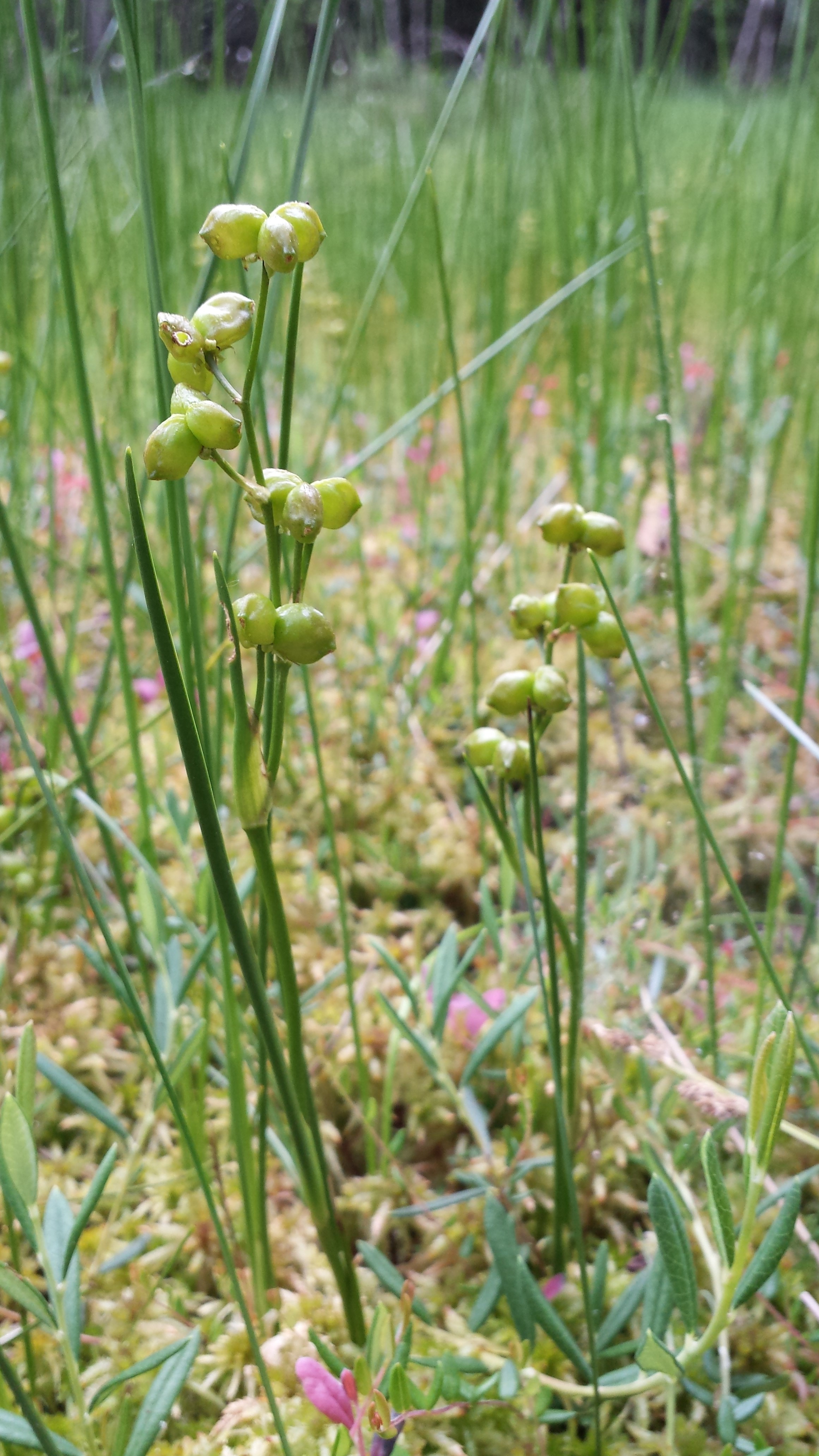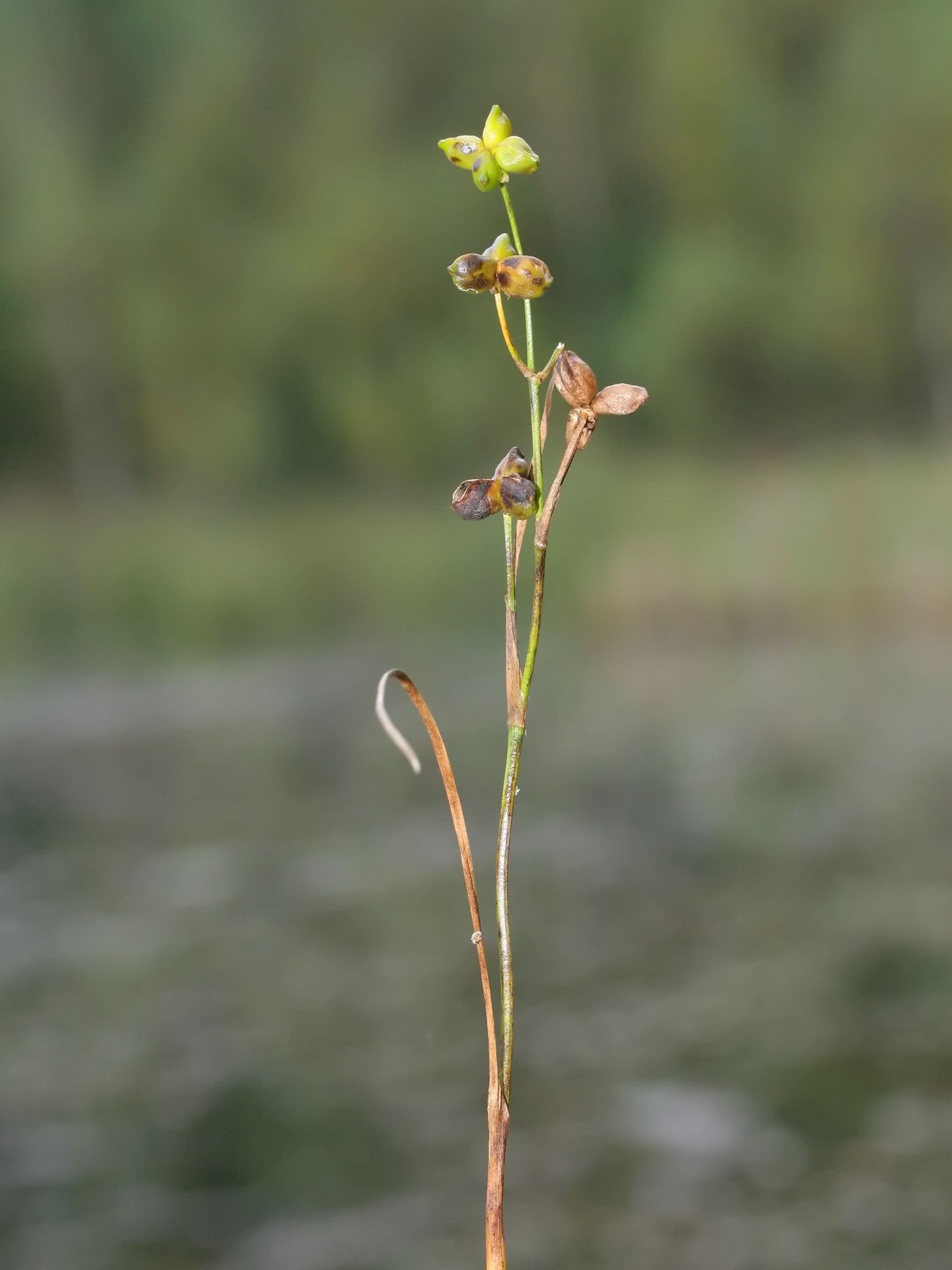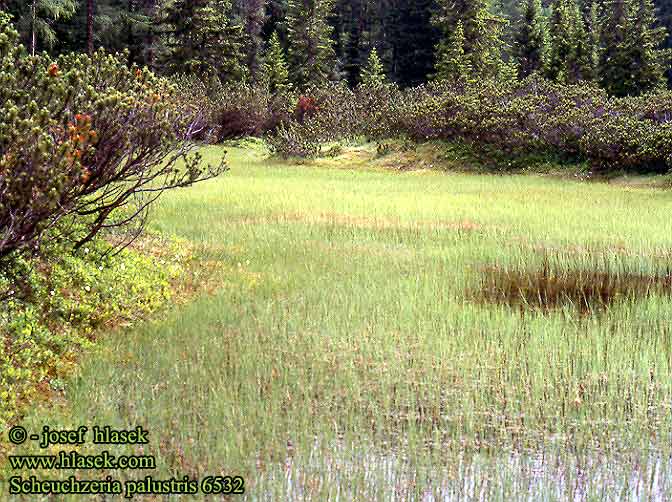Scheuchzeria
Blooming flowers bulrush ( Scheuchzeria palustris)
The flowers bulrush ( Scheuchzeria palustris ), which is named after the shape of the fruit also bubble bulrush and in Austria bubble cornices, is the only species in the monotypic genus Scheuchzeria, which in turn the only genus of the family of flowers Rushes ( Scheuchzeriaceae ), also bubble Rushes is called. About a use by humans is not known.
The German Flower bulrush species name is sometimes used as a common name for the flowering rush ( Butomus umbellatus ).
- 2.1 Ingredients and chromosomes
- 6.1 Notes and references
Description
Habit and foliage leaves
The flower grows as a slender bulrush, overwintering green, perennial, herbaceous plant that reaches the plant height 10-30 centimeters. This marsh plant is creeping rhizomes. The upright, unbranched stems zigzags.
The leaves are basal and alternate, in two and arranged almost three lines on the stem. The bins -like leaves are divided into leaf sheath and leaf blade. In the lower part of the stem is also surrounded with dead leaf sheaths. The open, 1.5 to 10 cm long leaf sheaths have 2 to 12 mm long, membranous ears ( ligules ). The upright, simple leaf blades are parallel-veined, linear, semi-circular, rinnig, 2-41 cm long and 1-3 mm wide. The stomata are tetracytisch. There are small pores on the tip of the leaf blade. In the axils many hair-like scales are available.
Inflorescences and flowers
In terminal, 3-10 cm long, racemose inflorescences are three to twelve flowers and long, foliage leaf-like bracts together. The inflorescence axis is extended after fertilization.
The star-shaped flowers are hermaphroditic and threefold. There are two circles, each with three white to yellow- green, free, identically shaped Bütenhüllblättern available; they are durable, membranous and 2 to 3 mm long. Two circles, each provided with three free stamens. The three-cell pollen grains have no aperture. The three or rarely six upper permanent carpels are fused only at their base. Each carpel has at its base a marginal one to three anatrope ovules. The usually three, rarely up to six stamps are 6-7 mm long and there is no stylus trained; the papillary scars are so sedentary. Pollination is by wind ( anemophily ).
Fruit and seeds
In a multiple fruit stand one to four follicles together. Their bright green to brown, 4-10 mm long, leathery, wrong - ovate and strongly inflated Balgfrüchtchen have a 0.5 to 1 mm long beak. Each follicle contains one or two, rarely three seeds.
The starch-rich seeds are ovoid, 4-5 mm long. The smooth, hard seed coat ( testa) has a brown to black color. The starch-rich seeds contain no endosperm, but a green, straight embryo, the cotyledon ( cotyledon ) is not photosynthetically active. The spread of the diaspore done swimming.
Ecology
The flowers rush is a rhizomatous Geophyt with underground runners.
Pollination of flowers carried by the wind ( anemophily ). Bloom time is from May to June.
The flower develop 3 (-6) and bubble, two - samige follicles. The starch-rich seeds contain no endosperm, but a green, straight embryo, the cotyledon ( cotyledon ) is not photosynthetically active. The seed coat is penetrated by large intercellular spaces, thus allowing the floating diffusion of the seeds.
Ingredients and chromosomes
As a typical ingredient that Triglochinin be mentioned that belongs to cyanogenic glycosides. There are calcium oxalate crystals present.
The chromosomes are 0.8 to 2 microns long. The chromosome number is 2n = 22
Occurrence
The flowers bulrush has a wide, circumpolares distribution area of the polar to temperate climates ( south temperat to boreal ) in the northern hemisphere, so a Holarctic distribution. The distribution is sub-oceanic to sub-continental. The distribution centers of the type focus on North-East Europe and North America. In addition, some isolated occurrences in Central Europe and East Asia are mentioned.
This species is restricted to acidic Between Moore and raised bog hollows; it is considered as characteristic species of the association Caricetum limosae (mud sedge society). The peat moss mud sedge is a plant community that forms on oligotrophic waters not walkable quaking. Especially White beak-sedge ( Rhynchospora alba), the mud sedge ( Carex limosa ) and the rare Fadenwurzelige sedge ( Carex chordorrhiza ) together with the bubble rush this company.
Worldwide, this species is not endangered. In Central Europe the flowers rush because of destruction of their habitats ( mining, cultivation and drainage of peatlands ) is only very rarely found. It is classified on the German Red List as " critically endangered ". Only in the foothills of the Alps and parts of East Germany, this species is still somewhat steady encountered, otherwise there are only occasional occurrence. In Lower Saxony, the species is now before only very scattered. 2011, they could still be detected in six counties.
System
The first publication of the species and genera name Scheuchzeria palustris or Scheuchzeria was in 1753 by Linnaeus in Species Plantarum, 1, p 338 The family Scheuchzeriaceae was published in 1830 by Friedrich Ludwig Karl Rudolphi in Systema orbis vegetabilium, 28. Synonyms for Scheuchzeria palustris are Papillaria palustris (L.) Dulac., Scheuchzeria americana GNJones, Scheuchzeria palustris subsp. americana ( Fernald ) Hultén, Scheuchzeria palustris var americana Fernald. The scientific genus name Scheuchzeria honors the Swiss biologist Johann Jakob Scheuchzer and John his brother Scheuchzer ( 1684-1738 ).
The Scheuchzeriaceae family belongs to the order Alismatales within the monocot plants. Scheuchzeria was sometimes incorporated into the Juncaginaceae. In most scientific publications since 1940 are the Scheuchzeriaceae represents an own family
The North American specimens differ somewhat in fruit shape and so they were as a variety Scheuchzeria palustris var americana Fernald or as a subspecies subsp Scheuchzeria palustris. americana ( Fernald ) Hultén separated by some authors. Flora of North America ( 2010) only recognizes the kind, but no varieties or subspecies.










